#LoRaWAN
Explore tagged Tumblr posts
Text
What is the difference between LoRa and LoRaWAN?
Introduction:
LoRaWAN serves as the communication protocol connecting the LoRa signal (which carries sensor data) to the respective application(s). To simplify, think of LoRa as the radio signal transporting the data, while LoRaWAN acts as the governing framework that dictates how this data travels and communicates within the network.

What is LoRa?
LoRa, short for Long Range, is a wireless technology known for its extended range and energy-efficient characteristics. It operates within unlicensed wireless frequencies, similar to how Wi-Fi utilizes the unregulated 2.4 GHz and 5 GHz bands. The specific frequency employed by LoRa varies depending on the geographic location of the deployment. For instance, in North America, LoRa operates in the 915 MHz band, while in Europe, it utilizes the 868 MHz band and in India it is 865 MHz to 867 MHz.
It is crucial to be aware of the legally permitted frequencies for LoRa deployments in each respective location. In terms of its communication range, LoRa can transmit data up to a distance of 10 kilometers in ideal conditions with a clear line of sight.
Low Power Wide Area (LPWA) technology can be categorized into two main types. On one hand, there's cellular LPWA, which utilizes mobile networks. Examples of cellular LPWA technologies include Narrowband IoT (NB-IoT) and Long Term Machine Type Communications (LTE-M). On the other hand, there's non-cellular LPWA like LoRa, which disseminates data by dividing it into encoded packets and transmitting them across various frequency channels and data rates.
What is LoRaWAN?
LoRaWAN is a network protocol that serves as the bridge between the LoRa signal, which carries sensor data, and the applications that use this data. In simpler terms, LoRa represents the radio signal responsible for transmitting the data, while LoRaWAN is the communication protocol that manages and defines how this data is transmitted across the network.
LoRaWAN offers several valuable advantages, including low power consumption, extensive coverage range, and cost-effective connectivity for devices that don't require high data transfer speeds. It's an excellent choice when cellular connectivity is too expensive or Wi-Fi coverage is unavailable. Some of the most compelling use cases for LoRaWAN include:
Agriculture: LoRaWAN's long-range capabilities provide reliable connectivity for rural applications where high data transfer rates are not necessary, making it ideal for agricultural applications. LoRaWAN sensors for agriculture are used for cattle management, soli monitoring, and temperature monitoring.
Asset Tracking and Logistics: LoRaWAN supports cost-effective location tracking of assets, with optimized battery life, making it a practical choice for asset management and logistics.
Smart Metering: LoRaWAN's sensors have the ability to reach even in underground utility locations makes it a suitable choice for smart metering applications.
Smart Homes: LoRaWAN can penetrate obstacles like walls and supports battery-powered devices with low data consumption, making it an attractive connectivity option for smart home applications.LoRaWAN sensors for smart homes are used for Air quality monitoring, water quality monitoring, and temperature & humidity monitoring.
Healthcare: The low power consumption, affordability, and reliability of LoRa technology make it suitable for connected health applications. IoT solutions based on LoRa hardware can monitor high-risk patients or systems around the clock, ensuring comprehensive health and medical safety management.LoRaWAN Gateways and sensors enhance production practices, enable efficient tracking and monitoring of shipments, and facilitate the development of cutting-edge medications.
Industrial Applications: LoRa-enabled devices and sensors play a crucial role in the transformation of industrial IoT operations like mentioned above. They digitize legacy processes and equipment, leading to increased profits, lower costs, and enhanced efficiency. These devices provide real-time data for predictive maintenance, machine health monitoring, reduced downtime, and more.
3 notes
·
View notes
Text
Container Tracker
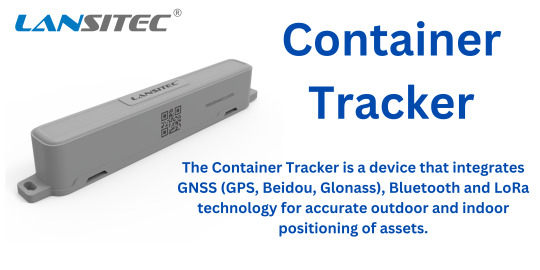
The Container Tracker is a device that integrates GNSS (GPS, Beidou, Glonass), Bluetooth and LoRa technology for accurate outdoor and indoor positioning of assets. It has an IP68 enclosure that provides protection against water and dust ingress. It has a large battery capacity that can support up to 180,000 Bluetooth tracking messages over 30,000 GPS coordinates. It supports tracking up to 100 Bluetooth beacons, and also supports UUID change to avoid interference from other devices.
For More:
#lansitec#technology#iot#lora#tracking#lorawan#asset management#Container tracker#Industrial Tracker#GNSS Industrial Tracker#LoRaWAN GNSS Tracker
2 notes
·
View notes
Text
Water Metering: Competitive advantage for scaled IoT
#1-Wire#Bluetooth#Councils#gateway#LoRaWAN#Modbus#Municipalities#NB-IoT#Network#Predictive Analytics#Real-time#Scale#Supply#Utilities#Water Meter
0 notes
Text
0 notes
Text
What are the major use cases and industries benefiting from LoRaWAN-based solutions?
1 note
·
View note
Text

The 5G IoT Market size is forecast to reach $40.5 billion by 2026, growing at a CAGR 61% from 2022 to 2026.
#5GIoT#IoT#5G#Industry40#SmartCities#ConnectedDevices#DigitalTransformation#IIoT#AIoT#LoRaWAN#NBIoT#LPWAN
0 notes
Text
Data Security and Precision Control: Precision Application of Smart Irrigation Using LoRa Technology and LoRaWAN Gateway
The application characteristics of LoRa modules in smart irrigation technology are mainly reflected in the following aspects:
Low Power Consumption: LoRa modules are characterized by extremely low power consumption, enabling devices to operate for extended periods on battery power. This reduces the hassle of frequent battery replacements and enhances the system's lifespan and reliability.
Anti-Interference Capability: LoRa technology has excellent anti-interference capabilities., ensuring stable communication quality even in environments with multiple radio signals.
Long-Distance Transmission: Utilizing low-frequency transmission, spread spectrum technology, and high-sensitivity receivers, LoRa modules can achieve wireless communication over distances ranging from several kilometers to over ten kilometers.
MESH Self-Organizing Network: LoRa modules can establish communication connections through self-organizing networks, eliminating the need for complex infrastructure and network wiring.
Precision Irrigation: LoRa modules offer stable and accurate data transmission, enabling real-time delivery of information such as soil moisture and weather conditions.
High Penetration: LoRa technology boasts strong signal penetration and stability, ensuring reliable signal transmission even in complex environments.
Multi-Node Support: LoRa modules support applications with multiple nodes. A single LoRa gateway can connect multiple sensor nodes, forming a complete network system for extensive, multi-point monitoring and management.
Data Security: LoRa modules provide high data security, employing encryption technology to protect data during transmission, preventing data theft or tampering, and ensuring the confidentiality and integrity of agricultural data.
Wide Coverage: LoRa technology can achieve wide coverage, typically ranging from several kilometers to over ten kilometers, without the repeaters.
Module Compatibility: LoRa modules are compatible with various types of sensors and control devices, offering a high level of system integration and facilitating seamless cooperation among different devices.

How the LoRa modules achieve precision irrigation in smart irrigation?
Remote Monitoring: Using LoRa modules, the irrigation system can achieve remote monitoring and control. Users can access real-time environmental data such as soil moisture and temperature from a distance and remotely control irrigation equipment, enabling precision irrigation.
Data Analysis: After the cloud platform receives sensor data, it analyzes and processes the information to promptly understand soil moisture conditions, providing a scientific basis for irrigation decisions.
Remote Control of Equipment: LoRa modules transmit commands to various irrigation nodes through long-distance, low-power wireless communication, controlling valve switches, irrigation times, and irrigation amounts.
Timed Irrigation: The irrigation schedule can be preset, and the LoRa module can be used to control the irrigation equipment to irrigate at the best time.
Feedback Mechanism: After irrigation is completed, the system re-monitors soil conditions and feeds the data back to the central control system.
Functions of the LoRaWAN Gateway LG1301-PF in Smart Irrigation Systems
Features of the LG1301-PF Gateway
LG1301-PF is the LoRaWAN gateway. It can work with any LoRaWAN node which comply Standard LoRaWAN protocol V1.0.
The gateway use linux platform as host.It mainly consists of concentrator ,GPS module ,WIFI and Ethernet. The GPS module send NMEA frames containing time and geographical coordinates data to the host. The GPS module also output one pulse to the sx1301 per second.
The gateway receives the RF data from nodes and sends it to the server. It also receive data from the server and transmit to the nodes. The gateway connects to the server via Ethernet or WiFi.
Support for LoRaWAN Protocol: Adapts to the LoRaWAN protocol, enabling the device to communicate with standard LoRaWAN networks for remote data transmission and management.
UART Interface: Provides a UART interface for convenient data exchange and integration with other devices or sensors.
AES128 Encryption: Uses the AES128 encryption algorithm to ensure the security and privacy of data transmission.
8-Channel Simultaneous Communication: Supports up to 8 channels of communication simultaneously
Configurable Parameters: Users can flexibly configure various parameters according to specific application needs.
Global Positioning System Support: GPS functionality enables precise positioning and tracking of the device.
Remote Transmission: Supports remote data transmission, allowing real-time data transfer and management between the device and the cloud via an internet connection.
Frequency Band Support: Covers multiple frequency bands (such as EU433M, EU868M, KR920M, AS923M, CN780M, CN470M, US915M, AS915M, etc.).
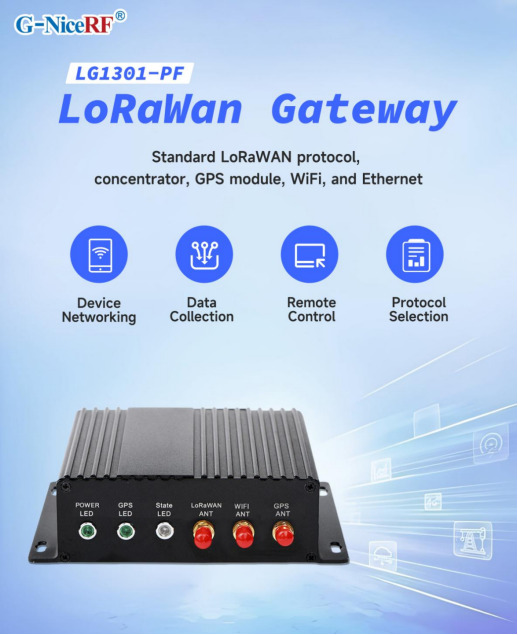
By using NiceRF LoRa gateway devices, sensor equipment in the irrigation field (such as temperature sensors, humidity sensors, light sensors, CO2 sensors, etc.) can be connected in real-time. These sensors collect data in real-time and periodically upload it to the cloud platform or local host computer via LoRa modules. This setup enables remote monitoring, fault alarms, equipment management, and provides scientific and reliable data support for adjusting irrigation strategies.
Data Monitoring Function: The sensor equipment monitors data such as air temperature, air humidity, CO2 levels, light intensity, soil moisture, and soil temperature. This data is transmitted through the LoRa gateway to the cloud platform, allowing users to analyze and process the information conveniently.
Remote Control and Adjustment: The LoRa gateway can connect to irrigation equipment, enabling remote control of the irrigation system. By sending commands from the cloud platform to the LoRa gateway, users can adjust irrigation equipment, such as remotely starting or stopping the equipment or adjusting irrigation parameters. This allows for intelligent irrigation based on feedback from soil moisture sensors, providing precise water management, reducing waste, and improving irrigation efficiency.
Anomaly Alarms and Warnings: The LoRa gateway can monitor abnormal conditions in the farmland environment and send alarm messages to users through the cloud platform. For instance, if soil moisture levels are too low or too high, the LoRa gateway can promptly issue an alert, reminding farmers to take appropriate irrigation measures.
Energy Efficiency Optimization: The gateway is designed with low power consumption features. By optimizing energy management and data transmission frequency, it effectively extends the operating time of the equipment, reduces energy costs, and enhances system sustainability.
For details, please click:https://www.nicerf.com/products/ Or click:https://nicerf.en.alibaba.com/productlist.html?spm=a2700.shop_index.88.4.1fec2b006JKUsd For consultation, please contact NiceRF (Email: [email protected]).
0 notes
Text
An In-Depth Exploration of IoT Connectivity Technologies and Their Uses
Discover the top IoT connectivity technologies and their applications in this detailed guide. Learn how to select the right technology for your needs.
Imagine a world where everyday objects communicate seamlessly to enhance the efficiency and convenience of our lives. The Internet of Things (IoT) has revolutionized how we interact with technology. By 2030, it's projected there will be over 32.1 billion IoT devices globally, nearly doubling from 15.9 billion in 2023. Examples include smart home appliances that adjust the temperature upon entry and wearable fitness trackers that continuously monitor health. These devices connect and exchange data thanks to IoT networking technologies. Let's explore these technologies further.
What Are IoT Connectivity Technologies?
IoT connectivity technologies encompass the various methods and protocols used to connect IoT devices to the internet or each other. These technologies enable communication, data transfer, and control for IoT devices, with over 29 billion connections anticipated by 2027.
Why Is IoT Connectivity Important?
The choice of IoT connectivity technology significantly impacts the performance, cost, and scalability of your IoT solution. High-speed, ultra-low latency connectivity is crucial for some applications, making 5G or 4G cellular IoT connectivity ideal despite higher costs and power usage. Conversely, simpler deployments might benefit from low-speed connections, which are more cost-effective and require less power.
Top 5 IoT Connectivity Technologies and Their Applications
Cellular Networks Cellular networks, essential in daily life for phones and tablets, provide wide coverage, reliability, and enhanced security. They are ideal for mobile IoT systems and serve as alternatives to LPWAN technologies like Sigfox and LoRaWAN.
Use Cases:
Point of Sale and Kiosks: Enables vending machines and kiosks to operate without Wi-Fi, expanding retail opportunities.
Delivery Tracking: Provides real-time shipment tracking across diverse environments, including remote or mobile scenarios.
High Data Rate Cellular (3G/4G/LTE/5G) With high Mbps speeds, these networks suit data-intensive IoT applications, mobile devices, and real-time video streaming. They support "massive IoT" deployments, connecting thousands of devices across large areas.
Use Cases:
Fleet Management: Real-time tracking optimizes operations, enhancing route planning and fuel efficiency.
Health Monitoring: Continuous health data transmission from wearables to healthcare providers ensures prompt intervention.
Ethernet Ethernet offers a reliable, low-latency wired connection, ideal where infrastructure is in place. It provides stable performance unaffected by physical barriers, suitable for stationary IoT devices.
Use Cases:
Security Cameras: Ensures uninterrupted video surveillance in homes or businesses.
Game Systems: Minimizes latency for gamers seeking reliable network performance.
Stationary Medical Devices: Facilitates real-time data transmission from medical equipment to centralized systems.
Wi-Fi Common in homes and offices, Wi-Fi supports secure, high-bandwidth connectivity within a limited range. It's ideal for localized IoT ecosystems where devices are confined to a specific area.
Use Cases:
Smart Gadgets: Integrates smart devices like TVs and appliances into home networks.
Digital Signage: Enables content updates and management in commercial settings.
Bluetooth Bluetooth excels in connecting small, battery-powered devices within short ranges, typically up to 30 feet. It offers low energy consumption, widely used in consumer electronics and small-scale IoT deployments.
Use Cases:
Smartwatches/Fitness Trackers: Syncs health data to smartphones, facilitating mobile monitoring.
Bluetooth Low Energy Sensors: Collects and transmits data from sensors in homes or small businesses.
These technologies cater to diverse IoT needs, each offering unique advantages in range, bandwidth, power efficiency, and scalability. The right choice depends on specific application requirements and environmental considerations.
Essential Requirements for Your IoT Connectivity Solution
Each use case has specific requirements translating into particular technology needs:
Technical Requirements: Consider data speed, latency, range, power consumption, and network coverage. High-speed applications might require advanced cellular technologies, while low-power long-range deployments might favor LPWAN solutions.
Commercial Requirements: Costs include initial setup and ongoing operational expenses. Technologies with lower power needs and simpler infrastructure can reduce costs, ideal for large-scale deployments.
Ecosystem Requirements: Compatibility with existing systems, availability of support and development resources, and integration with future technologies are crucial considerations.
Factors to Consider When Choosing IoT Connectivity Technology
Selecting the most suitable connectivity technology involves a careful assessment of each deployment’s characteristics. This strategic decision affects the immediate performance and cost-efficiency of your service and its long-term scalability and future-proofing.
Conclusion
The field of IoT connectivity technologies holds great promise. The IoT ecosystem evolves daily with advancements in low-power protocols, wireless networks, and emerging technologies. Significant advancements in connectivity technology, such as the implementation of 5G networks, will offer extremely low latency and fast speeds, facilitating seamless communication and new possibilities for real-time applications.
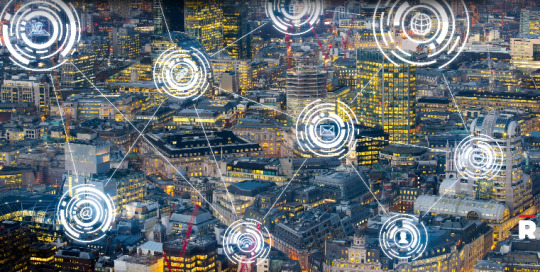
0 notes
Text
LoRa Fusion present Superior Smartphones Connectivity 5G

In the future of connectivity, smartphones will take off thanks to the integration of LoRA Fusion components
The current state of smartphone connection could be on the cusp of undergoing a significant upheaval. The Long The spectrum (LoRA) technology, which is well-known for its low-power communication capabilities across long distances, is on the verge of being incorporated into smartphones. This will open up a world of fascinating possibilities and revolutionize the linked world. This possible first-mover advantage might represent a significant step forward for the smartphone industry, despite the fact that exact specifics and development schedules are still in the process of being developed.
LoRA Fusion is what exactly?
The LoRA Fusion technology is a cutting-edge innovation that brings together the benefits of cellular networks with the advantages of LoRA. LoRA is superior than cellular networks in terms of long-range communication and low power consumption, whereas cellular networks provide high bandwidth and connections that are dependable.
LoRA Fusion enables customers to access a one-of-a-kind set of advantages by combining these capabilities, which are as follows:
Extended Network Reach: LoRA is able to transcend the restrictions of cellular coverage, making it possible to have dependable access even in places that are underserved or situated in distant areas. Individuals who often travel to rural regions, operate in settings that are geographically isolated, or depend on emergency communication services in circumstances that are not urban will find this to be of great use.
LoRA’s low power consumption greatly minimizes the amount of battery drain that occurs when compared to typical cellular connections, which results in an enhanced battery life. Those users who need their smartphones to have a longer battery life on a single charge may find this to be a very important feature, particularly in circumstances where access to charging stations may be restricted.
Potential for a large Range of Applications: LoRA Fusion enables a large variety of applications that go beyond what is considered to be fundamental communication. The company is able to facilitate a seamless integration of Internet of Things (IoT) devices, which enables users to remotely monitor and interact with smart homes, smartphones and tablets, as well as business machinery. This is possible throughout locations where wireless coverage is impeded.
A Benefit of Being the First Mover : The smartphone maker who is the first to effectively incorporate LoRA Fusion technology has the potential to acquire a major competitive edge among their competitors. This innovative approach would appeal to consumers who are knowledgeable about technology and are searching for enhanced connection options and cutting-edge features respectively. Additionally, early adopters might use LoRA Fusion to build unique apps and services, further distinguishing themselves as leaders in the ever-changing mobile industry when they do so.
Chances as well as challenges for Success
Despite contrast to being true that the adoption of LoRA Fusion into smartphones encounters an extensive amount of potential, there are some obstacles which need to be navigated.
These consist of a few of them:
Integration of Hardware
Adapting smartphone designs to incorporate LoRA technology may need the installation of extra hardware components, which may have an effect on the device’s dimensions, weight, and maybe even its price.
Standardization and Adoption
The establishment of industry-wide standards and the guarantee of comprehensive network coverage for LoRA will be essential to the success of the initiative.
Application Development
It is necessary to encourage developers to design engaging and user-friendly apps that use the unique features of LoRA Fusion in order to be successful in driving user adoption.
In spite of these obstacles, there is no denying the potential advantages that LoRA Fusion might bring about. The integration of cellular and LoRA technologies in mobile devices has the potential to revolutionize the concept of connection, provide users with more control, and open the door to the development of innovative new applications that can be used in a wide range of sectors. It is possible that the first smartphone maker to adopt LoRA Fusion will be at the forefront of determining the future of mobile communication. This is because the technology will evolve and these issues will be overcome.
Discover LoRa Fusion 8 Key Features:
image credit to jooby
Internet of Things (IoT) networks use game-changing LoRa (Long Range) wireless communication protocol. Utility, medical, agricultural, urban infrastructure, and environmental quality monitoring industries use it. Let’s examine the top eight LoRa technology features that have shaped its widespread adoption and remarkable use.
1.Long-range of Lora Fusion
LoRa technology is named for its seamless device operation over long distances. Its impressive ability to transmit data across several kilometers in open spaces ensures uninterrupted communication even in remote areas. LoRa can transmit data up to 15 km in open spaces.
2. LoRa Uses little power
LoRa technology excels in low-power devices, making it a popular solution for battery-powered IoT devices. LoRa technology has a 5–10-year battery life due to its low power consumption, reducing maintenance and improving system efficiency. This is especially useful when hundreds or thousands of sensors must work seamlessly and battery life must be optimized.
3. LoRa Cost-effective fix
When deploying an IoT network, device cost and infrastructure deployment are crucial. Fortunately, LoRa solutions are affordable. Compared to other wireless technologies, LoRa network setup is simple and inexpensive. LoRa-enabled devices are also affordable due to low manufacturing and purchasing costs. These factors make LoRa technology suitable for many IoT projects, including large-scale deployments.
4. LoRa Scalability
Scalability is important in IoT networks because investors expect them to add devices and expand coverage. LoRa technology scales quickly and easily. LoRa technology underpins the LoRaWAN protocol. It connects unlimited sensors, meters, and other devices. LoRa networks scale smoothly and efficiently thanks to this protocol-based system, which simplifies infrastructure expansion and device management in large-scale IoT projects.
5. LoRa Security
LoRa technology protects sensitive data and data transmission with a fully featured security suite. The AES-128 protocol encrypts data and strengthens communications, protecting LoRa networks from unauthorized access and tampering. LoRaWAN also authenticates devices to prevent unauthorized access to the IoT network.
6. LoRa Communication both ways
LoRa allows sensors to receive commands and send data to the network during two-way communication between devices and gateways. Devices can receive instructions and relay critical data bidirectionally, which is essential for real-time control and monitoring projects.
7. LoRa Geolocation services
Well-known LoRa geolocation eliminates the need for GPS hardware to track and position devices. LoRaWAN networks precisely locate devices using TDoA. This remarkable feature is used in asset tracking, logistics, and geofencing.
8. LoRa Compatibility
After careful consideration of open standards, LoRa protocols ensure device compatibility and efficient interaction with LoRaWAN networks. A diverse market of IoT-compatible products has grown due to this open approach. Finally, LoRa technology gives customers network flexibility.
Read more on Govindhtech.com
0 notes
Text
Smart Helmet Tracker with Sensors for Construction Accident Prevention
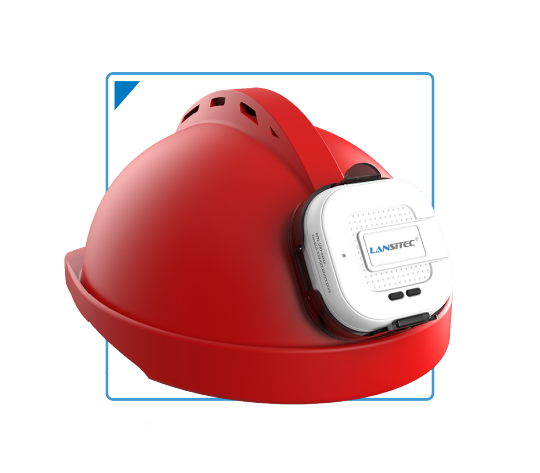
Construction-specific smart helmets use a variety of sensors, including temperature sensors, GPS, gyroscopes, accelerometers, and more. These sensors keep an eye on the wearer's vital signs, head movements, and surroundings all the time. In order to enable proactive accident prevention, the gathered data is processed in real time to deliver quick insights and early alerts. Lansitec Helmet Sensor is designed based on GNSS, Bluetooth5.0 and LoRa technology. It supports indoor and outdoor tracking. It supports various features which contribute to easy management in industrial settings.
For More:
#technology#lansitec#iot#lora#lorawan#asset management#Helmet Tracker#Helmet Sensor#Bluetooth#Sensor
2 notes
·
View notes
Text
Differences in Mesh Networking for Home or Industry

Reliability and Redundancy: Home Automation uses lightweight protocols (like Zigbee or Z-Wave) with some redundancy, but isn’t critical if a node temporarily drops out. Industrial use requires high fault tolerance, redundant paths, and self-healing capabilities to ensure uninterrupted ops, implemented using WirelessHART, ISA100.11a, or LoRaWAN.
Power and Maintenance: Home Automation is usually a simple battery powered unit with months to years of battery life. Data packets are small (…like switching a light on or off). Industrial devices may need grid power and uninterrupted supply.
#Endpoint#Home automation#Internet of things#ISA100.11a#LoRaWAN#Redundancy#Reliabiability#Security#System integration#WirelessHART#Z-Wave#Zigbee
0 notes
Text
1 Channel Industrial IoT Long Range Wireless Ultrasound Vibration Sensor

The Industrial IoT Ultrasound Vibration Sensor from NCD – a high-performance solution engineered explicitly for industry-leading predictive maintenance applications. Integrated with a wireless mesh networking architecture, it delivers an impressive range of up to 2 miles. The sensor employs a high-precision, dual-channel 16-bit ADC, capturing vibration data at user-specified intervals and wirelessly transmitting the recorded data to remote modems and gateways.
For More:
0 notes
Text
GPIOs do LoRaMesh da Radioenge: Portas digitais
Aprenda como usar as GPIOs do módulo LoRaMesh da Radioenge
As GPIOs do LoRaMesh da Radioenge possibilita que possamos fazer aplicações de automação com um uso reduzido de hardware, dedicando apenas ao circuito de chaveamento (se necessário) e de alimentação. No total temos no LoRaMesh 8 GPIOs sendo todas configuráveis como entrada ou saída digital e duas como leitura analógica. Porém neste post vamos apenas abordar as portas digitais. Por qual motivo…
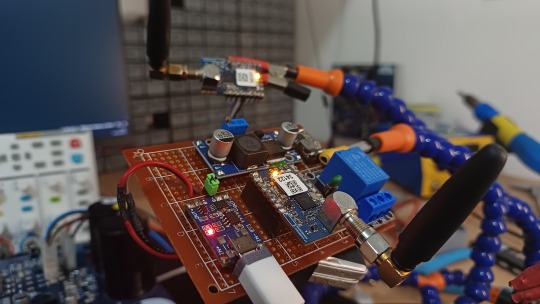
View On WordPress
#lora mesh arduino#lora mesh chat#lora mesh device#lora mesh library#lora mesh module#lora mesh network#lora mesh network raspberry pi#lora mesh protocol#lora mesh radio#lora mesh range#lora vs lorawan#loramesh#lorawan#lorawan devices#lorawan gateway#lorawan network#mesh lora
0 notes
Text
What is the LoRaWAN? Where is it used, and what is the cost?
Certainly, here's the information presented in different words:
LoRaWAN, which stands for Long Range Wide Area Network, is a wireless communication technology tailor-made for the Internet of Things (IoT). It's renowned for its capacity to transmit data over extensive distances while consuming minimal power, rendering it an excellent fit for diverse IoT applications.
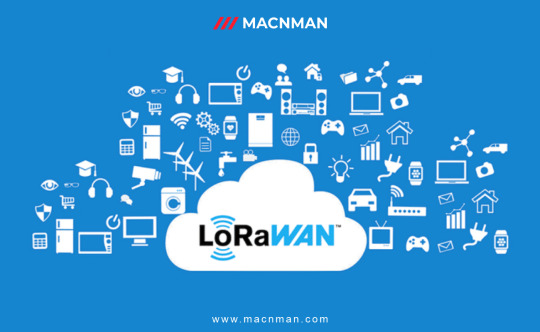
Key points about LoRaWAN:
Technology: LoRaWAN employs LoRa modulation, a technology that enables long-range data transmission. It operates within unlicensed radio frequency bands, often in the sub-GHz range. LoRa's modulation technique ensures excellent signal reach and the ability to penetrate obstacles effectively.
Range: LoRaWAN can achieve impressive communication distances, spanning several kilometers in open environments. This makes it ideal for scenarios where devices must transmit data across substantial distances. However, actual range may fluctuate based on factors like topography and interference.
Power Efficiency: LoRaWAN devices are designed with power efficiency in mind, allowing them to operate on battery power for extended periods—sometimes years—before requiring replacement or recharging.
Network Architecture: LoRaWAN networks typically adopt a star-of-stars topology. IoT devices communicate with gateways, which relay the data to a central network server. This server processes and delivers the data for use in various applications.
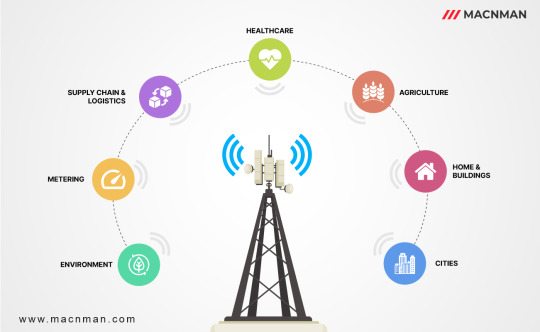
Use Cases: LoRaWAN finds application in numerous IoT scenarios, including smart cities (for tasks like smart metering and waste management), agriculture (for monitoring soil conditions and crop health), industrial IoT (for asset tracking and predictive maintenance), and environmental monitoring (for measuring air quality and pollution levels), among others.
Cost: The cost associated with implementing a LoRaWAN network can vary widely, depending on factors such as the number of devices, required range, and the network infrastructure's complexity. Generally, LoRaWAN is seen as a cost-effective solution because it allows for large-scale IoT network deployments without the need for substantial infrastructure investments. The cost of LoRaWAN devices can also vary but is typically designed to be affordable, particularly for applications requiring numerous sensors.
LoRaWAN's popularity stems from its capacity for long-range communication, energy efficiency, and suitability for a diverse range of IoT applications. Its cost-effectiveness and adaptability make it a practical choice for organizations and industries seeking to implement IoT solutions to monitor and manage various aspects of their operations
0 notes
Text
SENSORI DI CO2 SMART A CELLE SOLARI

Negli ultimi anni, in particolare dopo la crisi COVID-19, c'è stata una crescente attenzione da parte degli organismi di regolamentazione ambientale sul miglioramento della qualità dell'aria interna e sull'implementazione di standard più elevati.Questa attenzione è diventata cruciale per molte aziende e per il pubblico in generale, considerando che le persone trascorrono circa il 90% del loro tempo al chiuso. Inoltre, la ricerca scientifica ha stabilito una chiara connessione tra livelli elevati di alcuni inquinanti ed effetti negativi sulla salute, in particolare tra le popolazioni vulnerabili come gli anziani, i bambini e le persone con patologie respiratorie o cardiovascolari croniche. Gli indicatori chiave per misurare la qualità dell'aria e valutare i potenziali rischi per la salute includono la concentrazione di anidride carbonica (CO2), insieme ai livelli di temperatura e umidità.Di conseguenza, vi è una crescente domanda di dispositivi intelligenti in grado di monitorare, valutare e gestire le condizioni dell'aria interna. Tuttavia, il mercato attuale offre molteplici soluzioni che si basano su batterie usa e getta con un tempo di utilizzo limitato, che richiedono una manutenzione frequente. Studi recenti prevedono un aumento sostanziale della domanda globale di batterie da 185 GWh nel 2020 a oltre 2.000 GWh entro il 2030. Ciò rappresenta un'ulteriore preoccupazione per quanto riguarda le emissioni di gas serra e i danni ambientali causati dalla crescente domanda di batterie.MClimate CO2 Display LoRaWAN affronta queste sfide sfruttando la tecnologia LoRaWAN dei dispositivi intelligenti e integrando un display alimentato da pannello solare. Questa soluzione innovativa consente una misurazione precisa dei livelli di CO2, offrendo agli utenti informazioni essenziali per garantire un ambiente interno sano e confortevole, ma dà anche la priorità all'efficienza energetica, si allinea alle politiche ecologiche e non richiede manutenzione.Il dispositivo fornisce una soluzione utilizzando un modulo di rilevamento NDIR a bassa potenza con un intervallo di rilevamento di 400-5000 ppm con calibrazione ABC abilitata per impostazione predefinita, misurazione affidabile di temperatura e umidità, sensore di rilevamento del movimento e molte altre tecnologie innovative intelligenti per ottenere risultati eccellenti."In MClimate, ci dedichiamo a soluzioni per edifici intelligenti che siano sostenibili, efficaci e facili da usare, rendendo il CO2 Display LoRaWAN una testimonianza del nostro impegno", ha affermato Violeta Mitsova, co-fondatrice e CCO di MClimate. "Con la riuscita risoluzione dei problemi di connettività degli edifici grazie alla tecnologia LoRaWAN, combinata con l'integrazione delle celle solari di Epishine, abbiamo sviluppato un dispositivo IoT intelligente che non richiede la sostituzione della batteria, può sopravvivere senza luce per 14 giorni e non necessita di nessun altro tipo di manutenzione . Ciò consente agli utenti finali di monitorare la qualità dell'aria e agire in modo tempestivo sulle metriche visualizzate e i proprietari di immobili offrono risorse più rispettose dell'ambiente."Per avere informazioni in merito alla fornitura e installazione di soluzioni per il monitoraggio dell'aria in ambienti chiusi, domestici e professionali, non esitare a contattarci.Orizon S.r.l. - Domotica San Donà di Piave - System Integrators per l'automazione dei sistemi intelligenti domotici, multimediali e professionali come il Building Management System, connessi all'IOT. Fonte: SBM Read the full article
0 notes